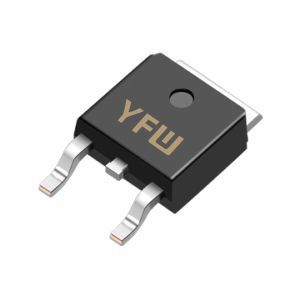Field-Effect Transistors (FETs): Principles and Classifications
Date:2025-04-25 Categories:Product knowledge Hits:580 From:Guangdong Youfeng Microelectronics Co., Ltd
FETs operate by controlling the conductivity of a semiconductor channel through an electric field generated by a voltage applied to the gate terminal. The channel connects the source and drain terminals. When a voltage (VGS) is applied between the gate and source:
For n-channel FETs, a positive VGS attracts electrons to the channel, increasing conductivity.
For p-channel FETs, a negative VGS attracts holes, enabling current flow.
This "field effect" allows precise control of the drain current (ID) with minimal gate current, making FETs ideal for low-power applications.
Junction FETs (JFETs):
Structure: Formed by a PN junction between the gate and channel.
Operation: Reverse-biasing the gate-channel junction creates a depletion region that narrows the channel, reducing ID.
Types: N-channel JFETs (common) and P-channel JFETs.
Metal-Oxide-Semiconductor FETs (MOSFETs):
Structure: Gate insulated from the channel by a thin oxide layer (SiO₂).
Enhancement Mode: Requires VGS above a threshold to form a conductive channel (e.g., logic gates).
Depletion Mode: Conductive channel exists at VGS = 0; used in analog circuits.
Subtypes: N-channel MOSFETs (faster switching) and P-channel MOSFETs (complementary designs).
Specialized FETs:
FETs excel in amplifiers, digital switches, voltage regulators, and analog signal processing. Their scalability and efficiency drive advancements in consumer electronics, automotive systems, and renewable energy technologies.
For reliable FET solutions, explore YFW Diode’s high-performance MOSFETs and JFETs, engineered for precision and durability across industries

Previous:
Classification, Structure, and Principle of MOSFET
Next:
Advantages of FET Amplifier Circuits for Precision Electronics